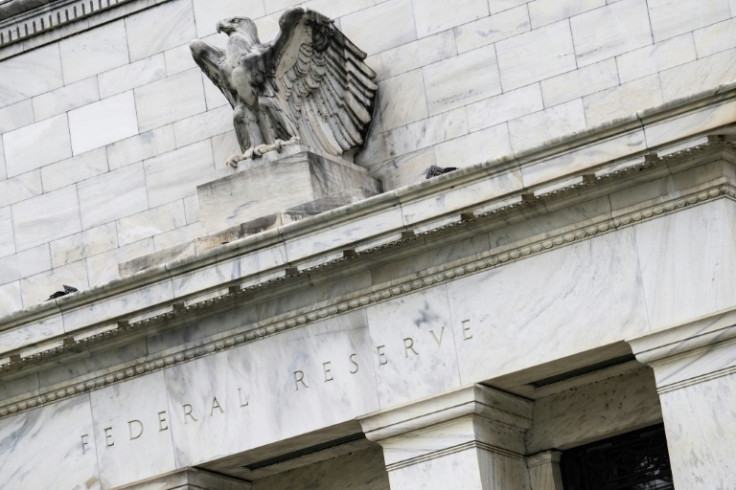Falling Inflation Could Give The Fed A Reason To Ease The Pace Of Rate Hikes
After accelerating for several months, inflation has begun to ease in recent months, giving the Fed a good reason to reduce the pace of rate hikes.
According to FRED data from the Federal Reserve Bank of St. Louis, annualized monthly inflation peaked last June at 12.83% and has been falling since then.
The slowdown is driven mainly by less inflation in goods, with service and housing still high, according to Paul Kutasovic, professor of finance at the New York Institute of Technology, with long experience analyzing macroeconomic trends. "So, it's a kind of a tale of two economies: services and goods," he told International Business Times in an interview. "I guess the good side is slowing due to lower commodity prices, shipping costs, easing supply constraints such as semi-in autos, lower energy prices, the stronger dollar, and growing inventories at retailers."
Then there's the slowdown in domestic demand, as evidenced by early data on the third-quarter GDP. It came better than expected, thanks to foreign demand, but that could change as the strong dollar and the weakening of the world economy could reverse the situation.
Danielle DiMartino Booth, chief executive officer and chief strategist of Quill Intelligence and a former advisor to Richard Fisher, the former president of the Dallas Fed, sees inflation easing, too. "We have reached peak inflation, as pricing power is being challenged and supply chains are healing," she told IBT. "We will also see a continuation of the dissipation in wage pressures, by far the most significant source of inflation in the economy, as most employers are in the process of reducing headcount."
A combination of declining inflation and weakening domestic demand could give the Fed a reason to change its narrative in the upcoming meeting this week, setting the stage for easing the pace of rate hikes and eventually pausing them altogether.
Moreover, the Fed could borrow a phrase from the ECB, which set the stage for the easing of interest rate hikes last week by referencing time policy lags — the time it takes for interest rate hikes to bring inflation down.
And the Fed can refer to the "neutral" or "natural" interest rate — the rate consistent with full employment and steady prices.
According to its econometric models, the neutral rate is between 2 and 3%, below the current Fed Funds Rate of 3.25%.
That's why the Fed would have to slow down the pace of rate hikes but not pause them. At least not in the December meeting, according to Robert R. Johnson, professor at Creighton University's Heider College of Business. "The Fed is almost certainly going to raise by 75 basis points at this week's meeting. And, unless the data dramatically changes, there will likely be another 50 to 75 basis point hike in December," he told IBT.
But Kunal Sawhney, chief executive officer of Kalkine Group, an Australian equity research firm, thinks a pause will eventually be in the cards, not too far above the neutral rate. "The Fed is not sure how much to hike rates above neutral," he told IBT. "However, the maximum projected hike from the Fed is for an extra 1.75%."
Still, Booth, who sees the Fed hiking interest rates by 75 basis points this week, thinks that a tapering of the rate hikes in the December meeting shouldn't be taken as a signal of imminent rate cuts.
"The idea that the Fed would initiate a smaller 50 basis point rate hike in December has been telegraphed for some time, and I would not interpret this as a signal that there will be rate cuts any time soon," Booth added. "It is a message that Powell is likely to deliver on Wednesday."

© Copyright IBTimes 2025. All rights reserved.






















